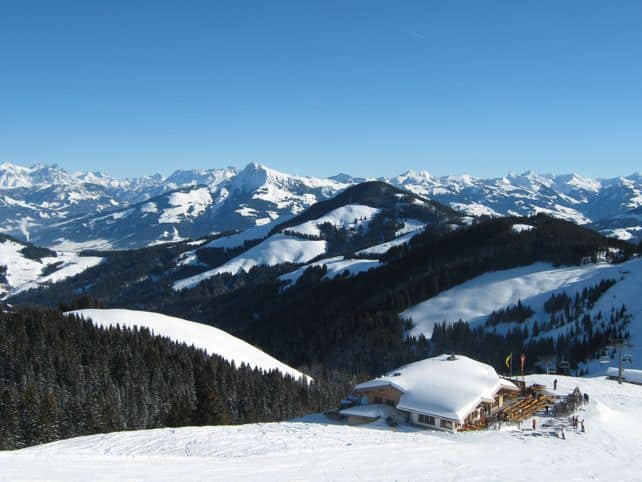
For many skiers, the need to lower the carbon footprint of their winter holidays is becoming urgent. So it’s good to know that there are easy ways to do this when you head to the Tirol – and often they’ll to add to your enjoyment of the trip, rather than constraining it.
Here are five of the most obvious steps.
1. Take the train from the UK
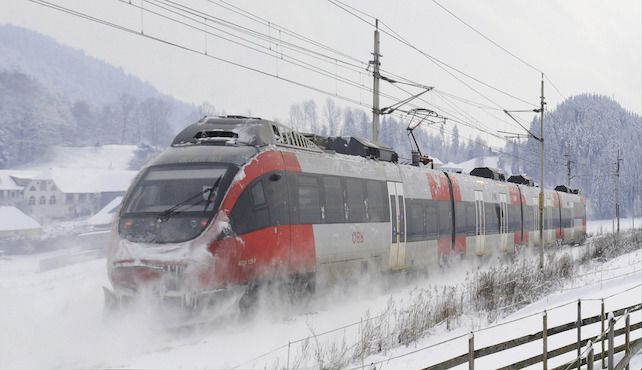
If you’re serious about making your skiing more sustainable, and not just tinkering at the edges of the problem, forget flying. Nothing else will come to close to the impact of switching to rail.
Why? Because more than half the carbon emissions produced by ski resorts are thought to be generated by transport to and around them. Meanwhile, research by sustainability specialists Anthesis on behalf of rail-travel website snowcarbon.co.uk has estimated that taking the train to the slopes – as opposed to the plane – can reduce the carbon footprint of your travel by a whopping 60%.
Fortunately, rail travel to the Tirol from the UK is perfectly feasible,as well as being more relaxing – especially if you pick a resort with its own mainline railway station. St Anton am Arlberg is the best example. A world-class resort, loved by advanced and expert skiers as well as après-ski aficionados, it sits on the main line from Zurich to Innsbruck.
Tavel by Eurostar from London to Paris Gare du Nord, switch to the Gare du Lyon for a TGV Lyria to Zurich Hauptbanhof and catch a Railjet service from there to St Anton, and you can be there in 12 hours. That’s not much longer than a flight, once you’ve factored in all the faff at the airports and the transfer to follow. Along the way, you’ll have had a big, fat eyeful of Europe too.
Another option is to travel to via Brussels, Cologne/Frankfurt and Munich, heading towards Innsbruck. This route is similar in price, takes about the same time, and avoids the slightly anxious change of mainline stations in Paris. Once in Innsbruck you’ve got several ski areas on your doorstep – notably Igls, the Stubai Glacier and the Nordkette. The Nordkette is reached by Zaha Hadid’s cool funicular railway.
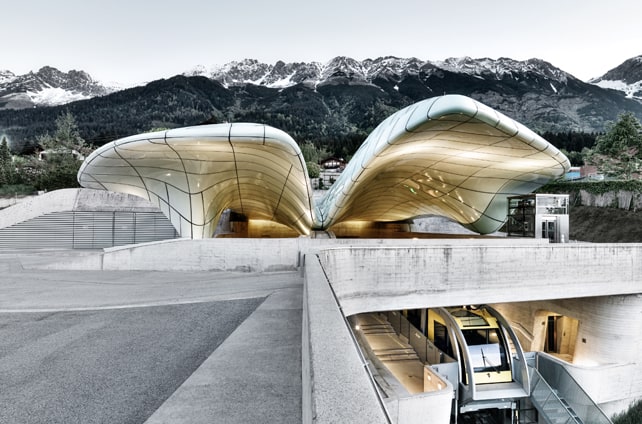
You can also get a Nightjet sleeper train from Cologne to Innsbruck too; if you change at Wörgl en route you can access services to Kirchberg, Kitzbühel and St Johann in Tirol. Or take a taxi transfer to the resorts of the Skiwelt.
Check the route and fare-finding websites such as trainline.com to find out what’s available. Bear in mind also that if you book several months in advance through the Austrian national train company, ÖBB, you can buy at least part of your journey at discounted Sparschiene rates.
Meanwhile, the Four Seasons taxi service can provide fast car and minibus transfers to resorts that aren’t served themselves by stations – such as Ischgl (from Landeck) and Sölden (from Ötztal Bahnhof). Or even jump on a local bus. Alpbach is one of several resorts offering free travel on the VVT scheduled bus services from Jenbach station to the village.
2. Target resorts using green energy supplies
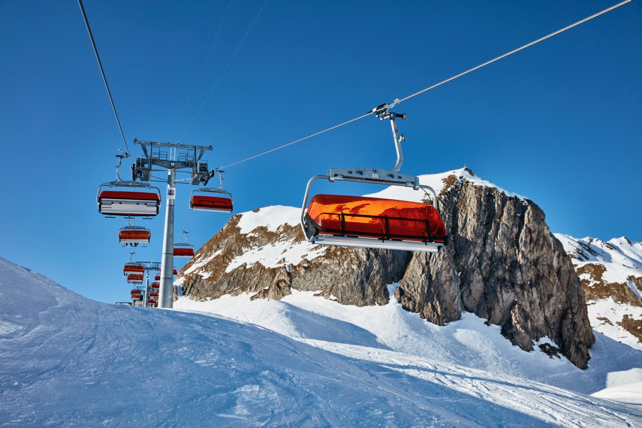
Another big step towards the sustainability of skiing has come from resorts that run wholly, or in part, on renewable energy. Amongst the Tirolean leaders in this respect are;
Ischgl, whose lift system, snow cannons and mountain restaurants all powered by 100% renewable electricity with no CO2 emissions.
Kühtai, which gets all its electricity from the Sellrain-Silz hydro-electric plant and the water for its snow cannons under natural pressure from the Kaisersee reservoir.
The Skiwelt, whose lift system has been powered by hydro-electric plants for over 20 years, and is supplementing this supply with solar panels, heat pumps and heat recovery systems.
St Anton, which supplies itself with hydro-electric power from the Kartellsee reservoir.
Mayrhofen which gets its power from a hydro-electric power station nearby that has generated 670 million kWh every year since 1970.
The Zillertal Arena ski area which uses photovoltaic cells and local hydroelectric power to ensure its energy supply is 100% carbon-neutral.
3. Stay in an eco-friendly hotel
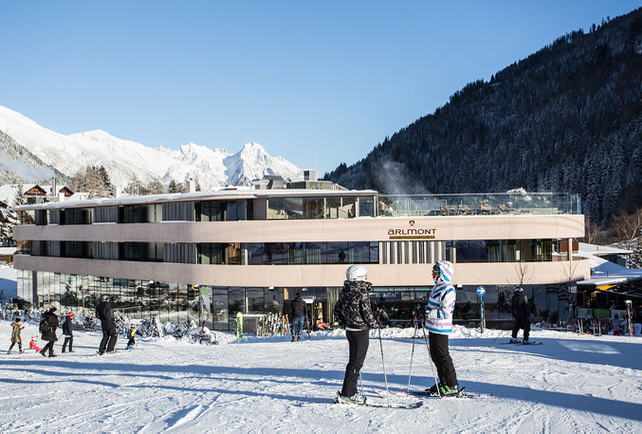
You can extend your sustainability drive by staying in the right hotel too. Many hoteliers are deeply concerned by the impact of climate change on their mountains and are striving to reduce their carbon footprint – without affecting the quality of their guests’ holiday experience.
In St Anton, for example, the Hotel Arlmont draws all its heating from a wood-chip burner facility, supplied from sustainably-managed local forests, as well generating some of its own electricity with rooftop photovoltaic cells. In Alpbach, the Gästehaus Larch is a standard-bearer for sustainability. Solar panels heat its water, a pellet-burner (using local wood) warms the rooms, and photovoltaic cells provide the electricity (when the sun’s out at least). Meanwhile rainwater fills the WC cisterns and waters the garden. And in Ischgl, the Hotel Fliana is 100% climate-neutral, receiving all its electricity from hydro-electric sources, as well off-setting all its carbon emissions, and using a biomass heating system.
For more sustainable accommodation suggestions, check out the Eco.Tirol pages at tyrol.com.
4. Eat local
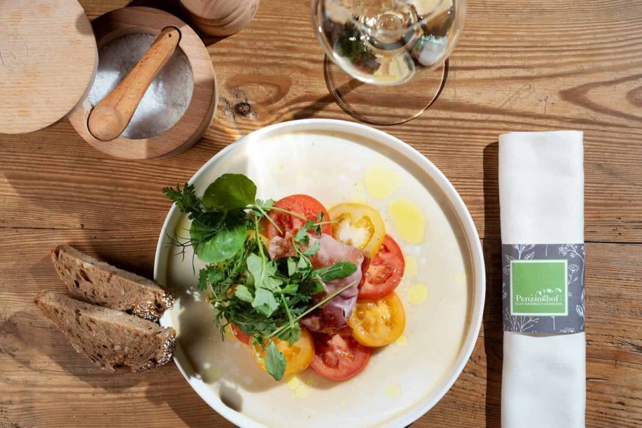
Perhaps the most widely-followed sustainable practices in the Tirol are those that involve food. And no wonder: given how rooted in their valleys many of our family-run hotels are. Some even have their own farms. In Galtur, the Huber family, owners of the Panorama Hotel Almhof, produce their own milk, meat and award-winning cheese in the largest farm in the Paznaun valley. In much the same way, the Hotel Penzinghof in St Johann in Tirol supplies itself with yoghurt, cheese, butter and goat’s cheese, while its lamb, beef and venison comes from the neighbouring district of Pinzgau. It even has its own still.
More widely, several national schemes also guide guests towards hotels with good environmental practices in the kitchen. Austria’s Bio Garantie certifies properties with the highest organic standards, while AMA Gastrosiegel rewards those with short supply chains and ingredients drawn from the immediate area.
5. Rent your ski clothing as well as your skis
One final thing. It’s common practice now for skiers to rent their boots and skis – rather than buying their own and have them sitting, unused in a cupboard, for months on end. So why not extend that approach to ski clothing too? Yes, okay, base layers (especially woollen ones) can be useful all year. So too waterproof/windproof shell jackets, backed up by the odd fleece. But if you’re only in the mountains once a winter is it the best use of the planet’s resources to buy your own ski helmet, goggles, and brightly-coloured ski trousers? In the UK, Ecoski supplies skiers with short-term holiday rentals instead: and in the process, gives them the pleasure of updating their “look” every year. Meanwhile in Austria Ski Gala delivers hired ski clothing direct to their clients’ hotels for the duration of the trip – so they can cut down on their luggage, too.










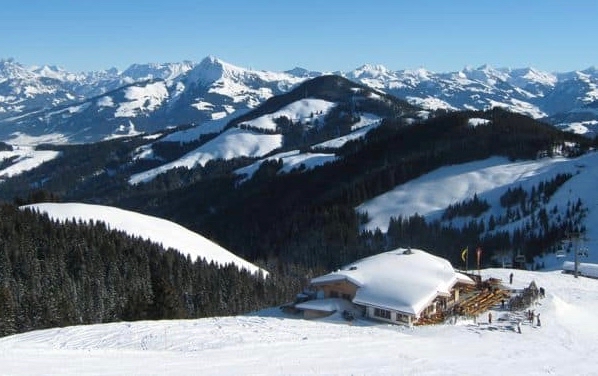
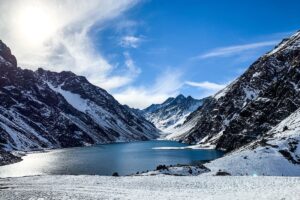

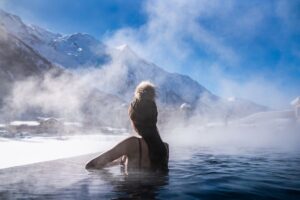
Add Comment